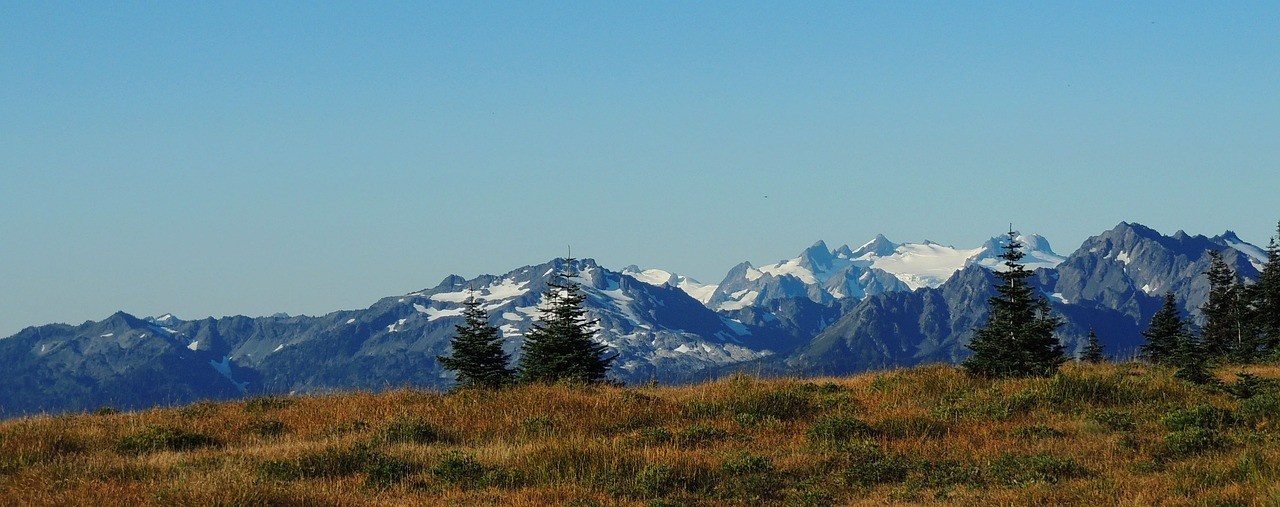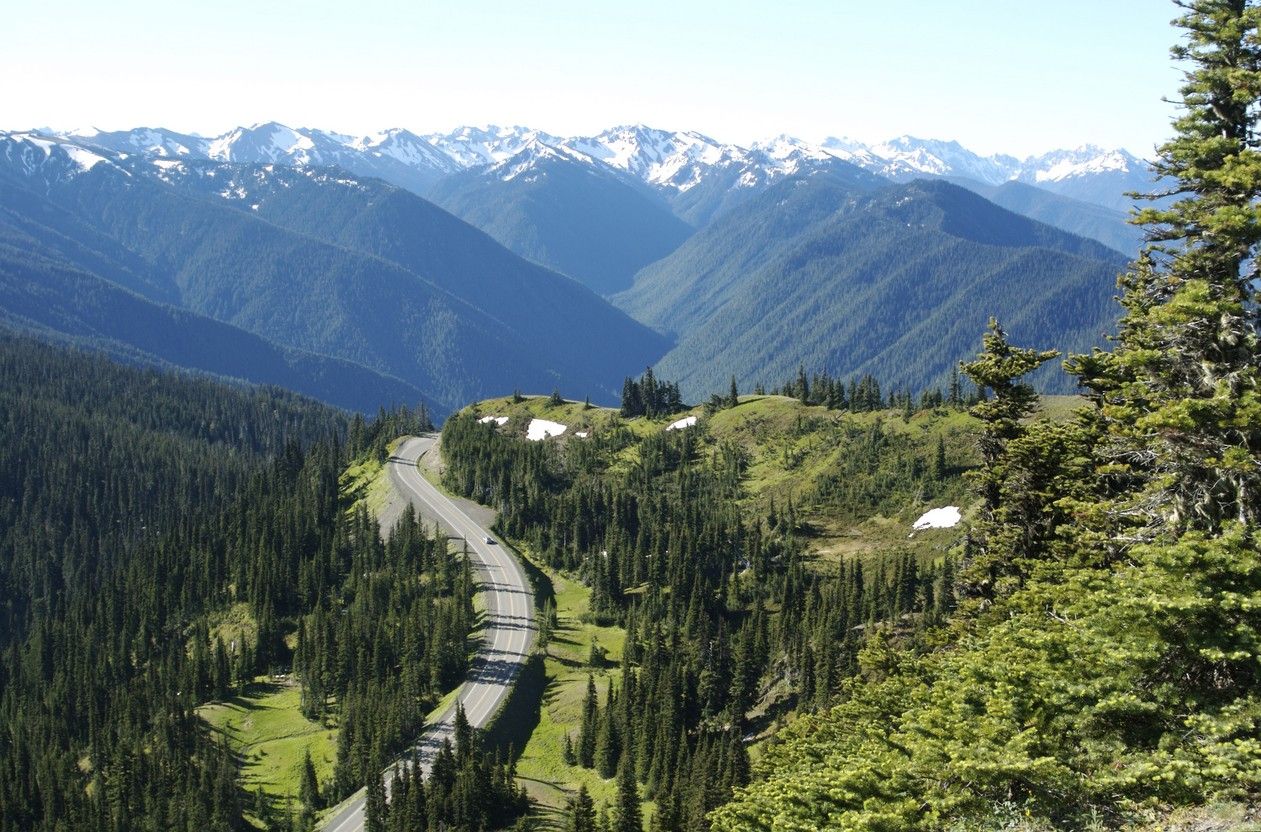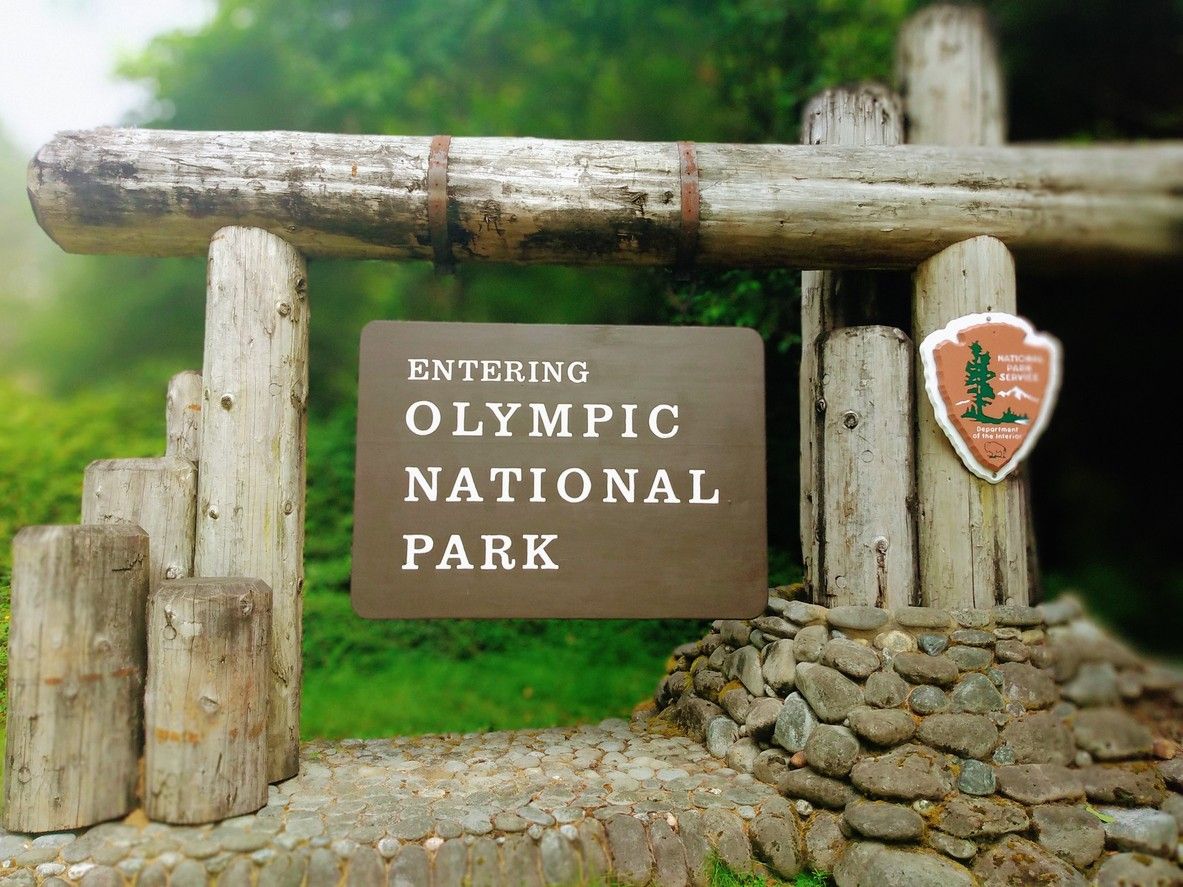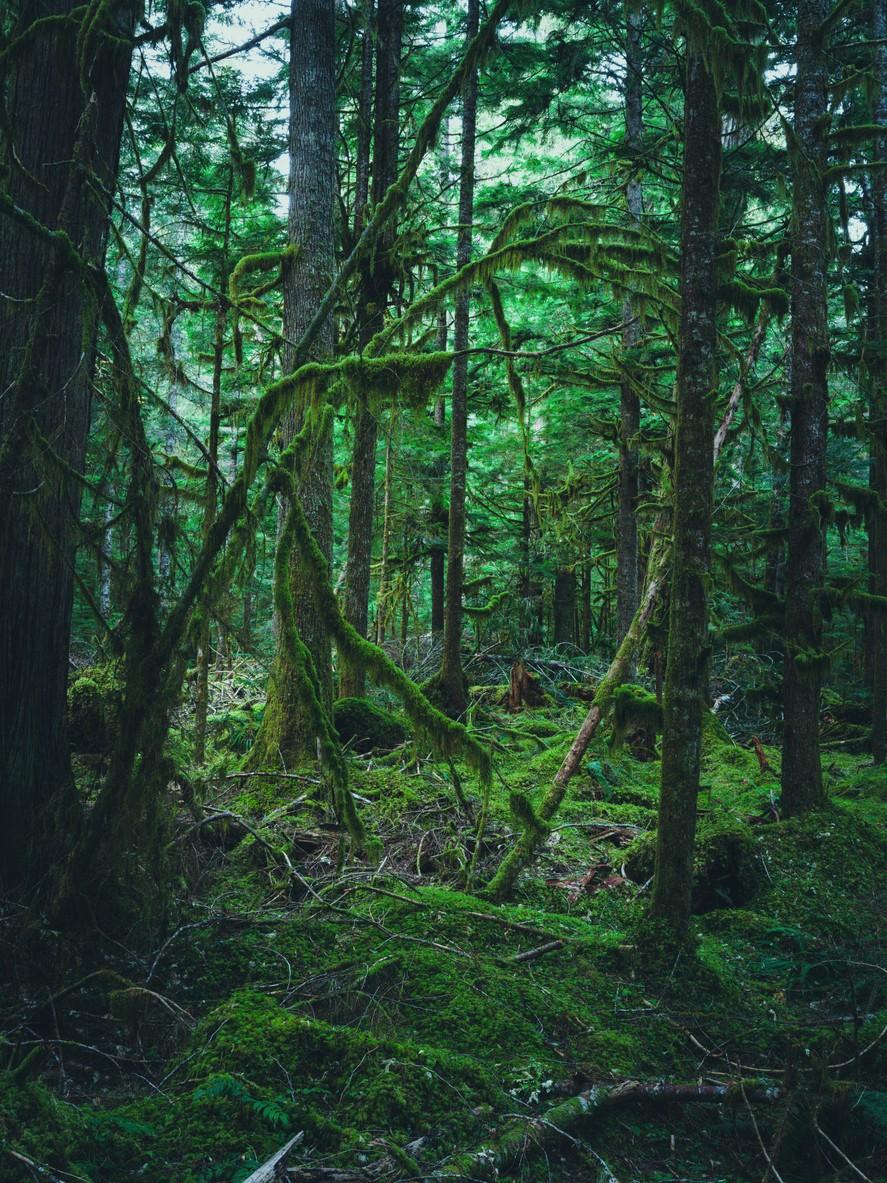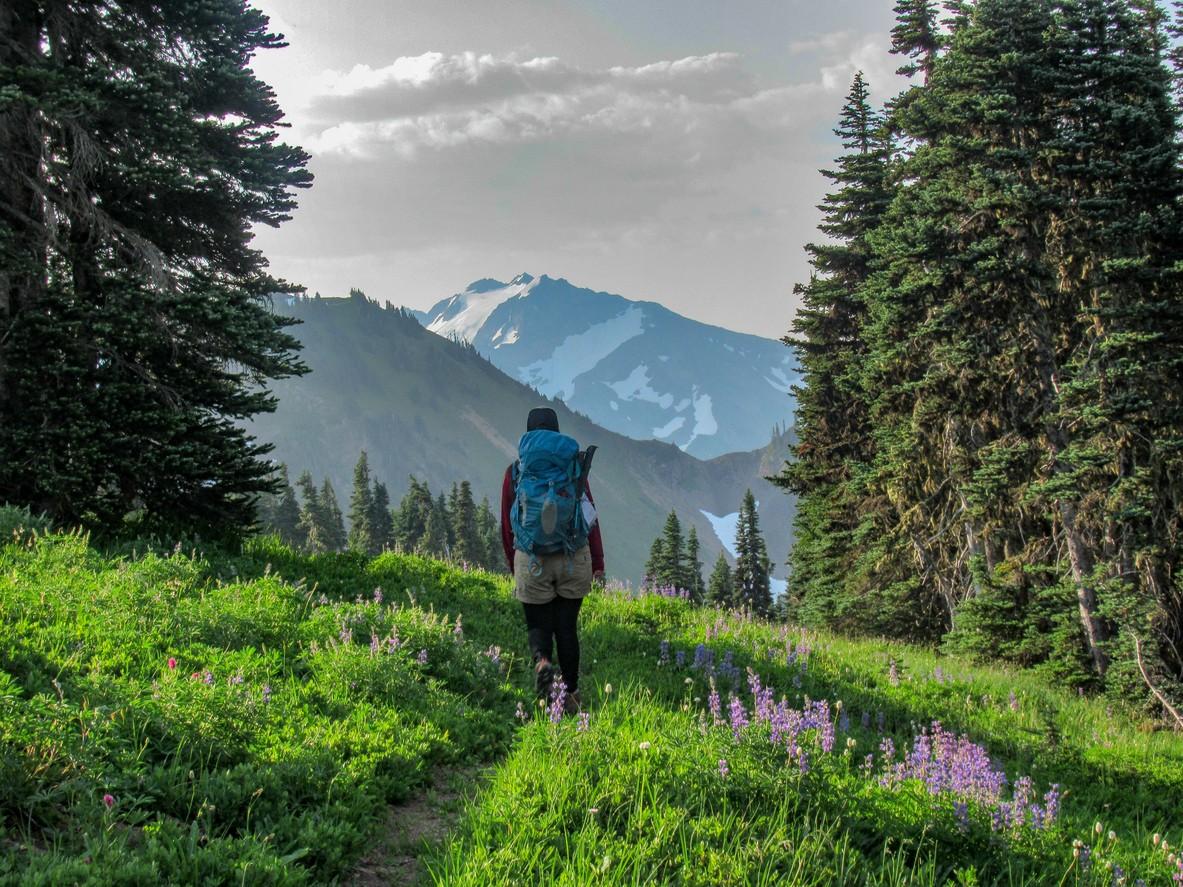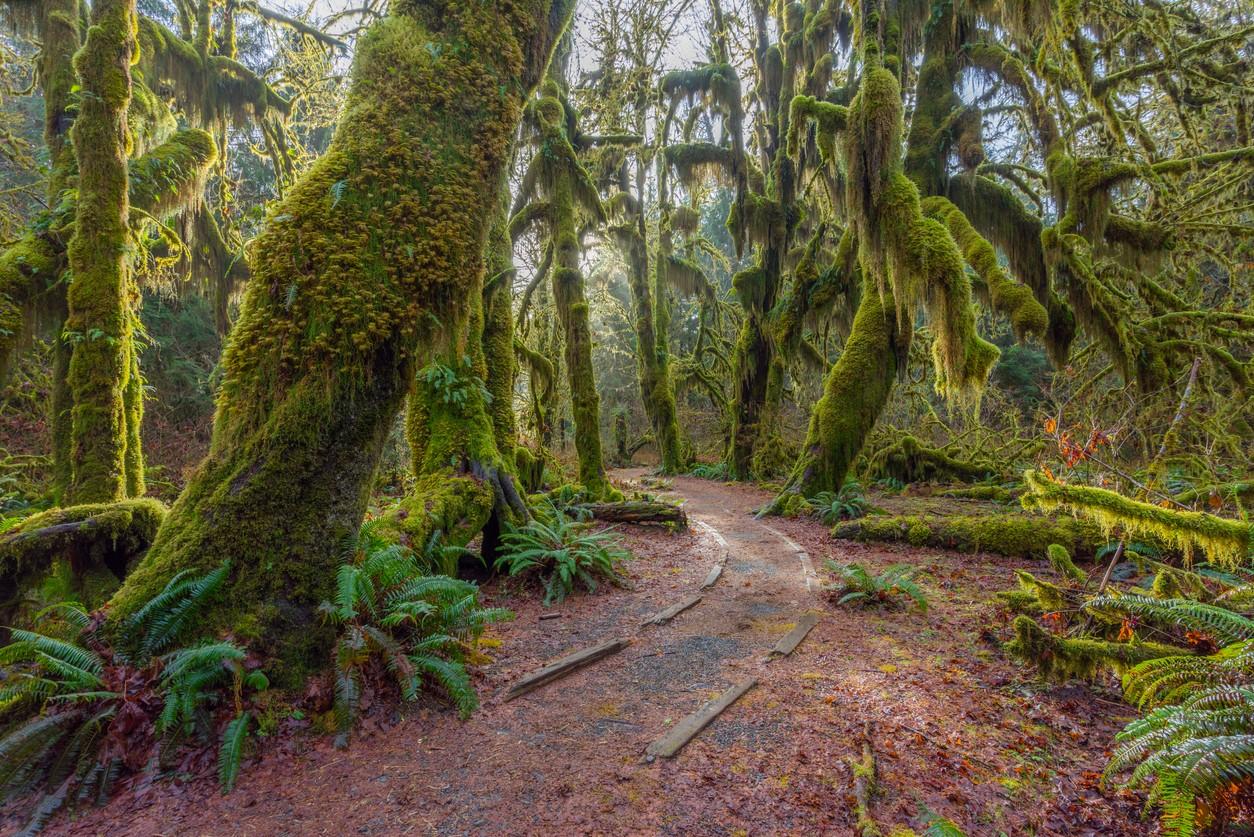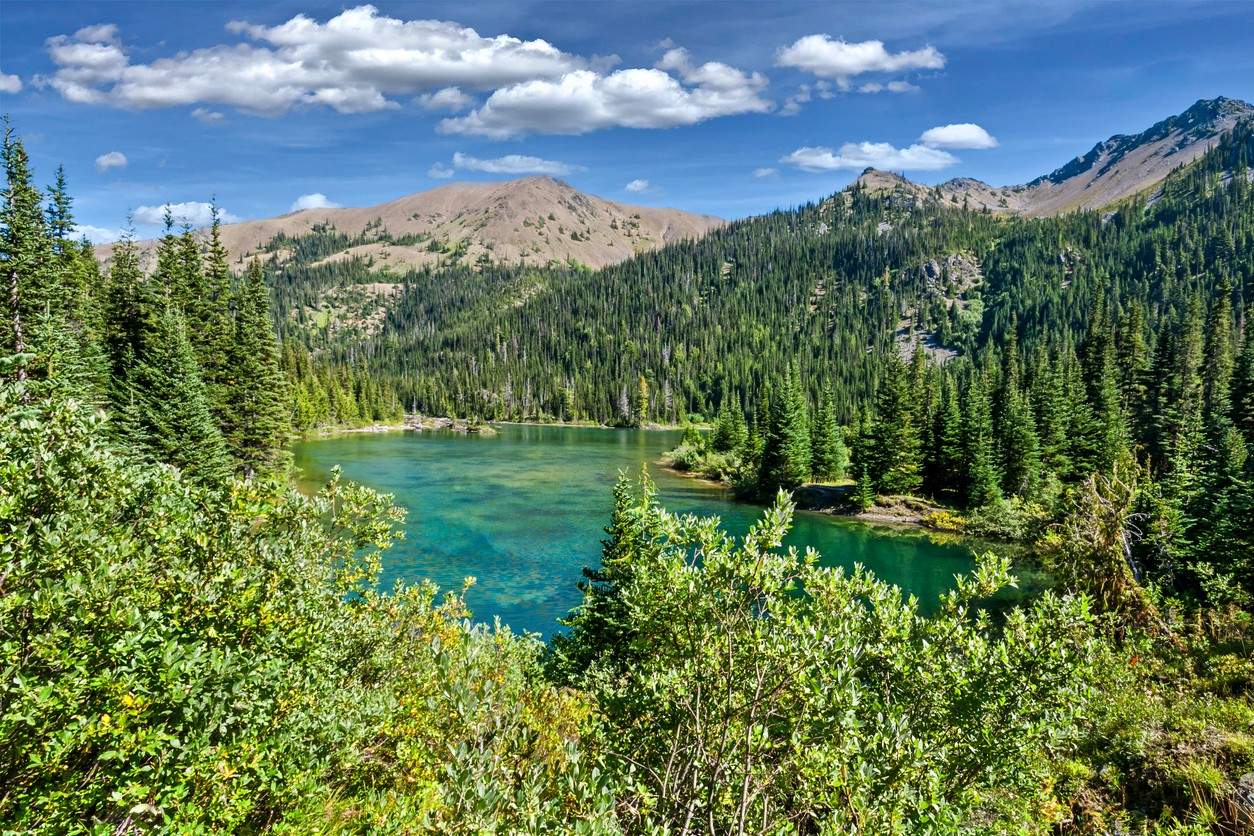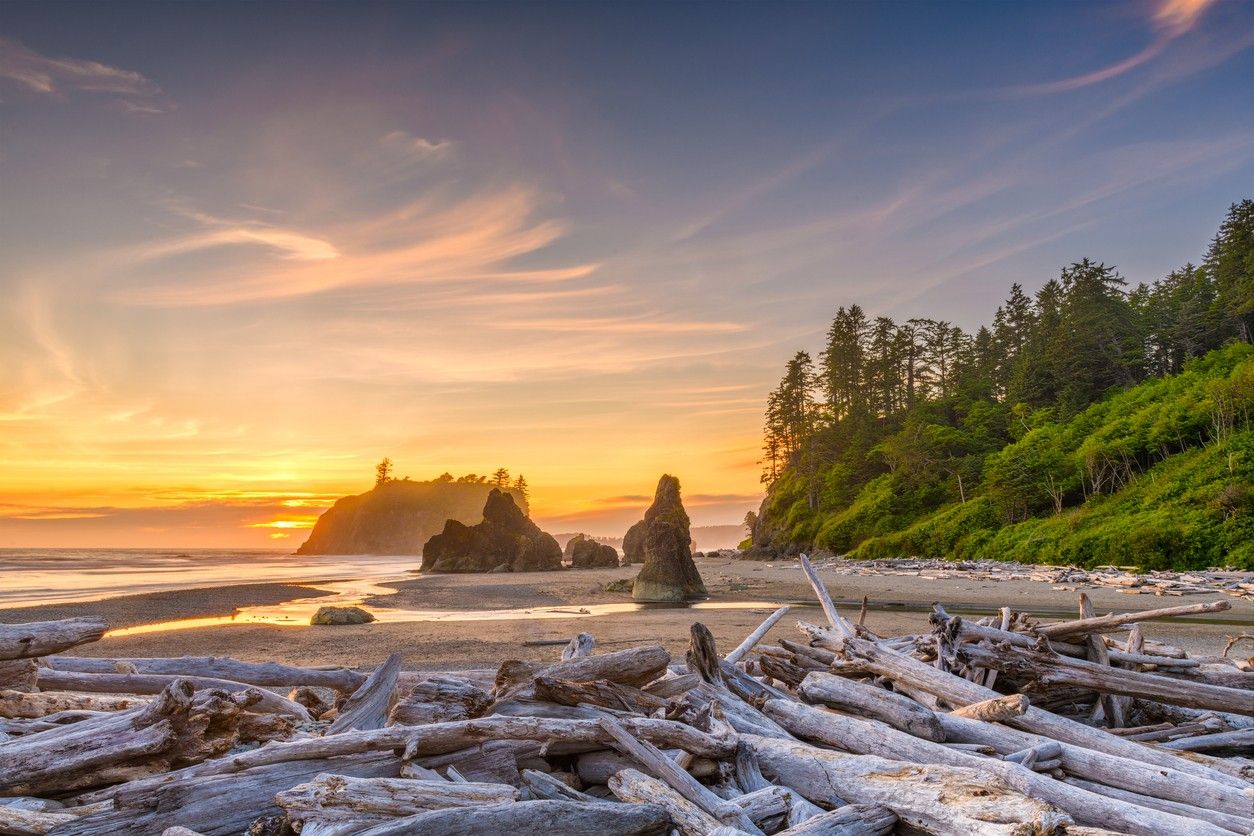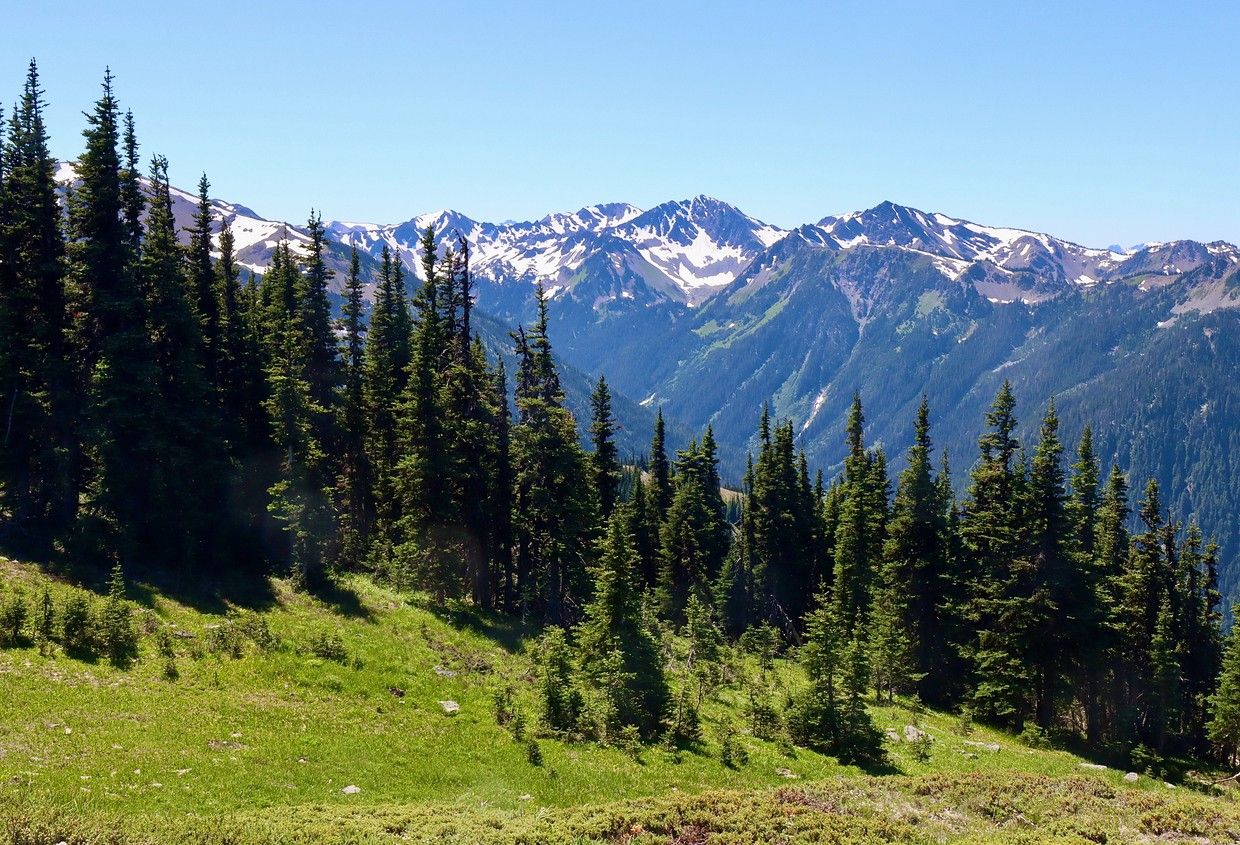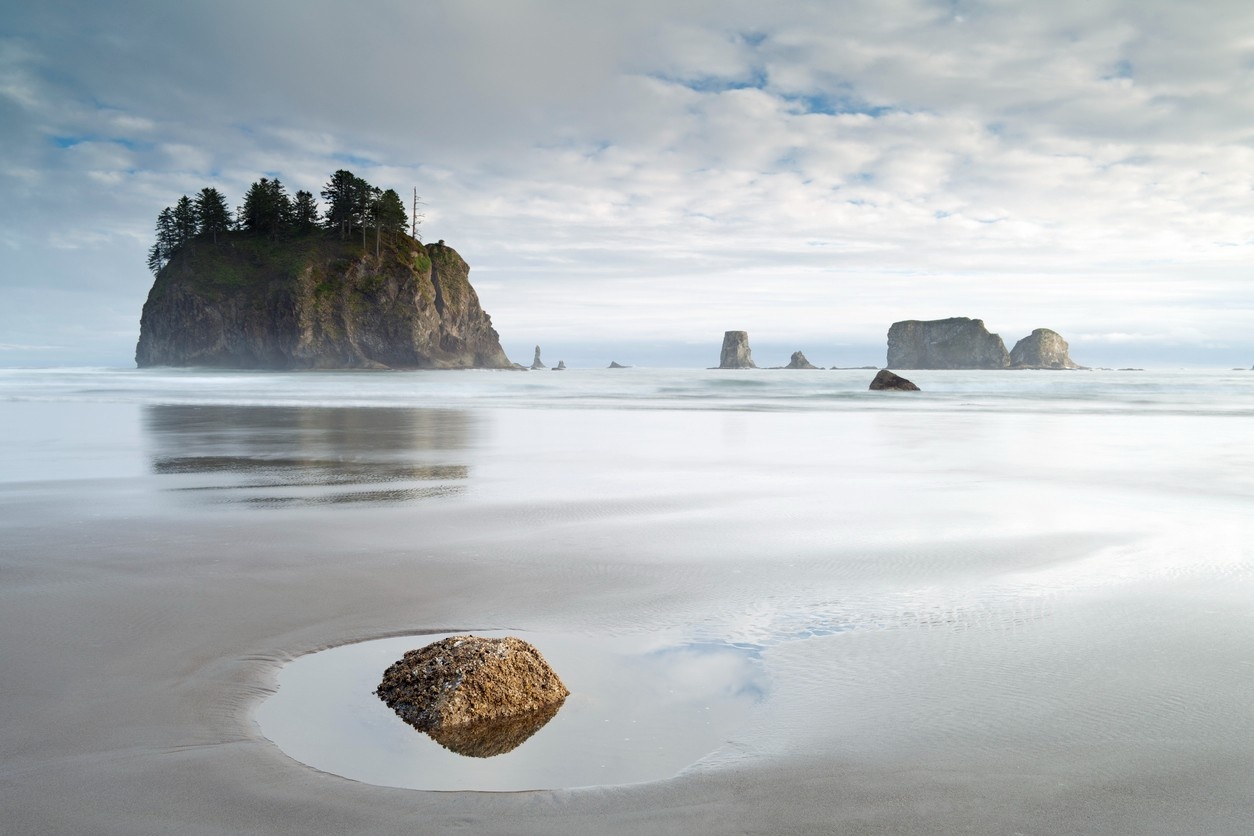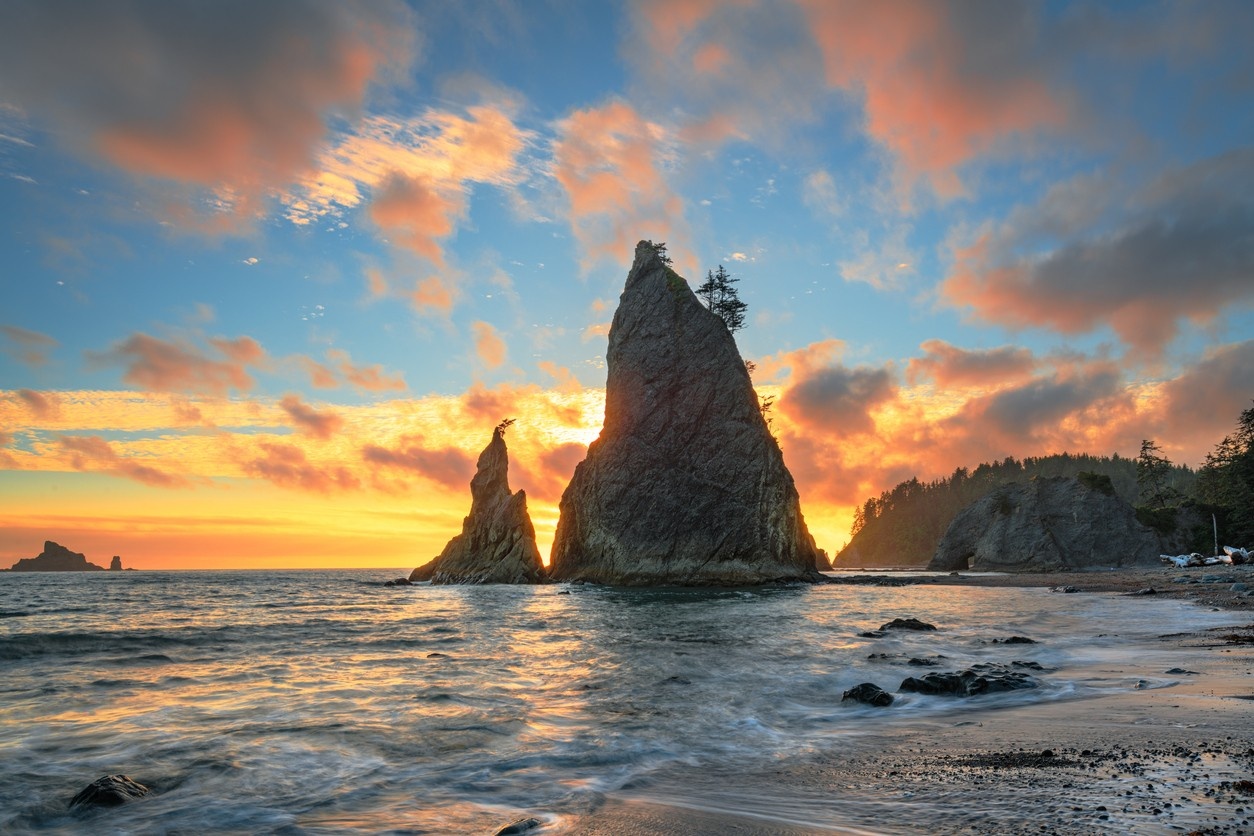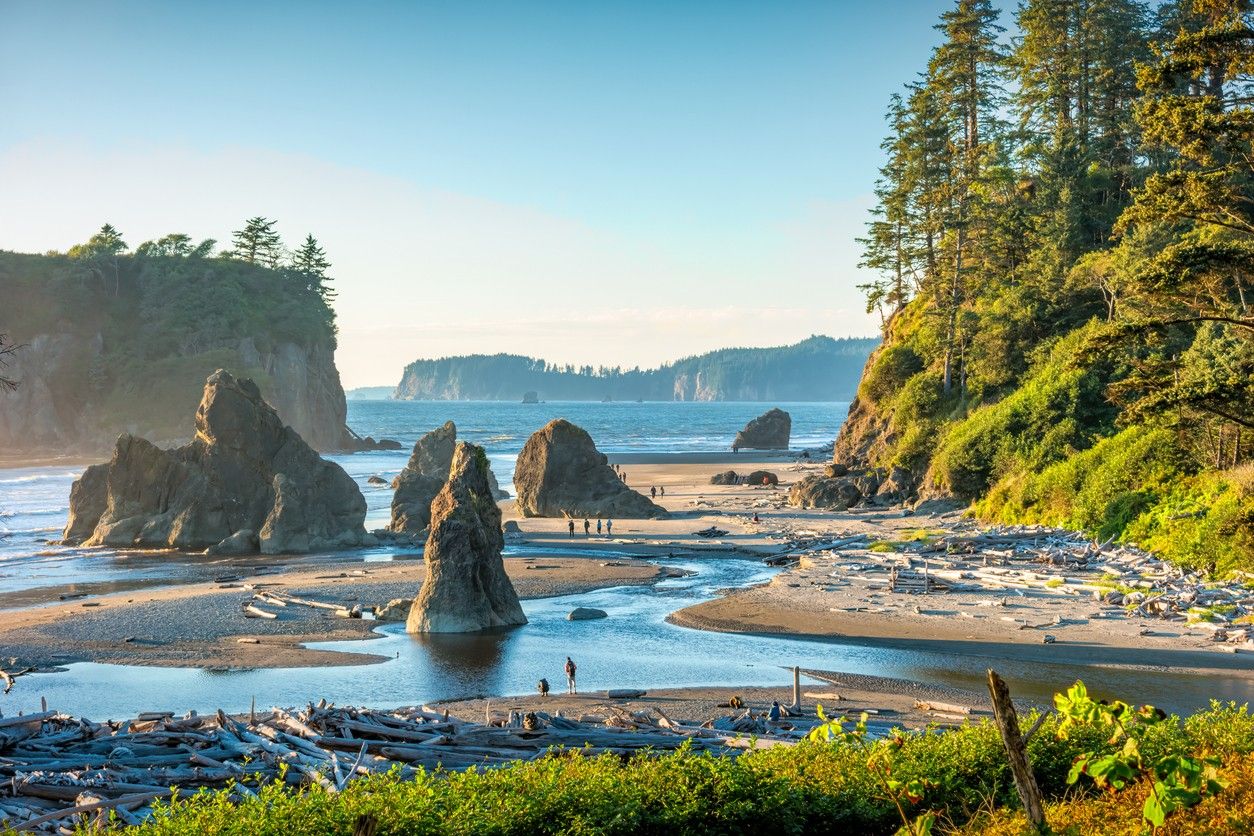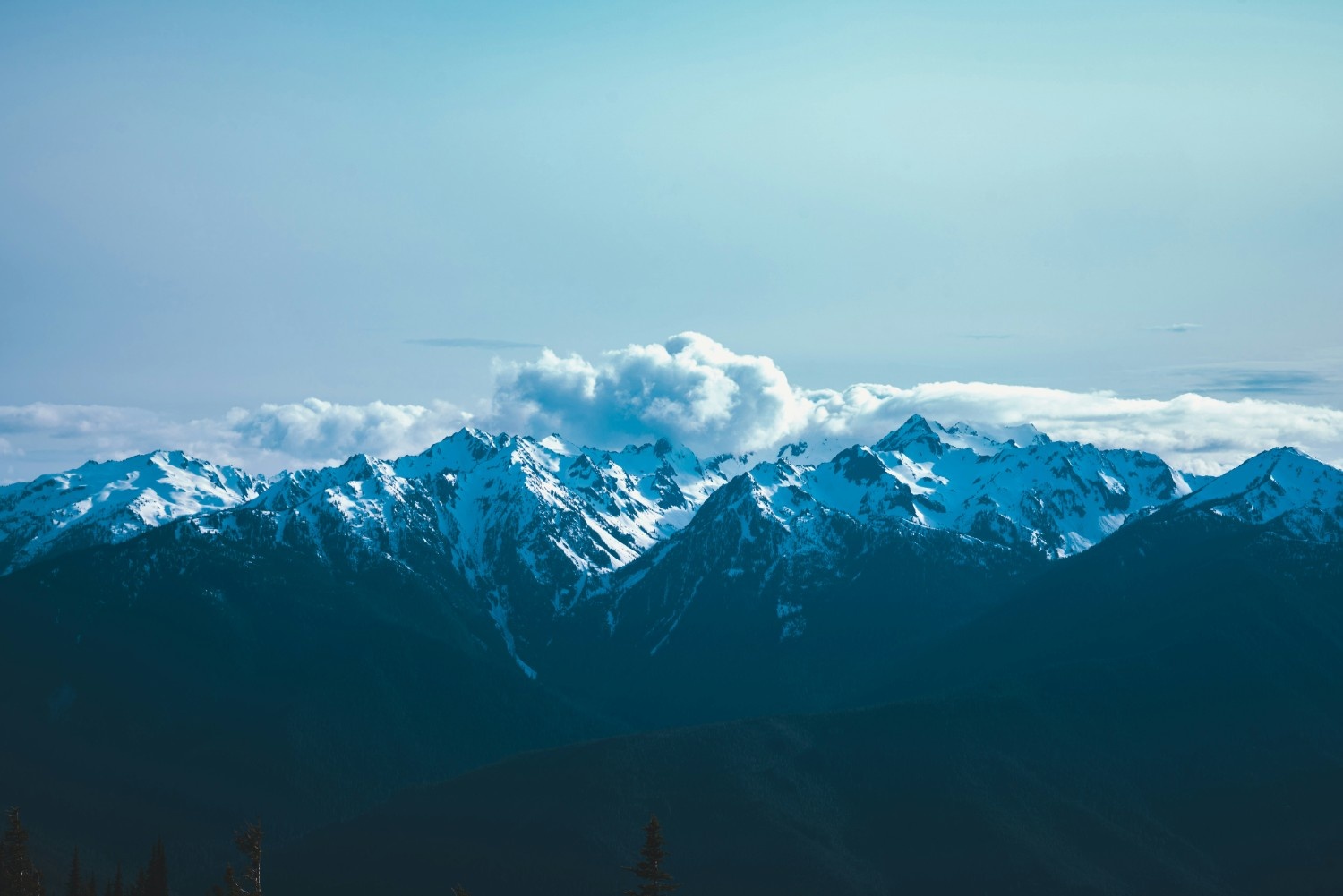Located in the heart of Washington's Olympic Peninsula, Olympic National Park is a breathtaking wonderland that encapsulates the raw, untamed beauty of the Pacific Northwest. This vast expanse of nearly one million acres is a true gem, boasting a diverse tapestry of ecosystems that range from ancient rainforests and glacier-capped peaks to rugged coastlines and pristine alpine meadows. Designated as a UNESCO World Heritage Site and International Biosphere Reserve, Olympic National Park beckons nature enthusiasts, adventure seekers, and those yearning for an escape into the great outdoors.
Highlights and Must-See Attractions
At the heart of the park lies the Olympic Mountain range, a rugged bastion of jagged summits reaching heights of over 7,000 feet, including the iconic Mount Olympus, the highest point in the Olympic Peninsula. These peaks are adorned with some of the most impressive glaciers found in the contiguous United States, carving their way through the rugged alpine terrain and feeding crystal-clear streams and rivers. For those seeking a true immersion in nature's primordial splendour, the park's ancient rainforests, including the Hoh and Quinault, beckon with their moss-draped trees, ferns, and lush undergrowth, creating an otherworldly atmosphere that captures the senses and transports visitors back to a time when these verdant wonderlands dominated the landscape. In stark contrast to the park's inland wonders, the wild Pacific coastline offers a dramatic display of rugged beauty, with towering sea stacks, secluded beaches, and tide pools teeming with marine life. Iconic hikes like the Ozette Loop and coastal trails in the Kalaloch area provide unparalleled opportunities to explore this untamed shoreline and witness the majesty of nature's power.
The Olympic Mountain Range — At the core of Olympic National Park lies the Olympic Mountain Range, a towering bastion of jagged summits that form the heart of the Olympic Peninsula. This rugged range boasts several peaks exceeding 7,000 feet in elevation, including the park's highest point, Mount Olympus, which stands tall at 7,969 feet.
Glaciers and Alpine Landscapes — These peaks are adorned with some of the most impressive glaciers found in the contiguous United States, including the striking Blue Glacier, which descends from the flanks of Mount Olympus itself. Easily accessible from the Hurricane Ridge area via the strenuous 14-mile round-trip Glacier Meadows Trail, the Blue Glacier offers a breathtaking sight for visitors willing to embark on this challenging hike.
The Hoh Rainforest — For those seeking a true immersion in nature's primordial splendour, the Hoh Rainforest offers a journey through a realm that feels plucked from prehistoric times. Located in the western part of the park and accessible via the Upper Hoh Road, this verdant wonderland is draped in moss-covered trees, ferns, and lush undergrowth, creating an otherworldly atmosphere that captivates the senses.
The Quinault Rainforest — Equally awe-inspiring is the Quinault Rainforest, situated in the southwestern region of the park. Visitors can access this ancient forest via the North Fork Quinault River Road, which leads to the Quinault Rain Forest Nature Trail, a short but enchanting 0.5-mile loop that immerses hikers in the heart of this verdant realm.
The Ozette Loop — The park's wild Pacific coastline presents a dramatic contrast to its inland wonders, with its towering sea stacks, secluded beaches, and tide pools teeming with marine life. One of the best ways to experience this rugged shoreline is by embarking on the renowned Ozette Loop, a 9.4-mile circuit accessible from the Ozette Campground or the Ozette Lake trailhead.
Coastal Hikes and Beaches — For those seeking a more condensed coastal experience, the Kalaloch area offers several shorter hikes that showcase the park's rugged shoreline, including the Kalaloch Beach Trail, a 4-mile round-trip journey that provides stunning views of the iconic Tree Root Cave.
Hiking Trails
Lace up your hiking boots and embark on an unforgettable journey through Olympic National Park's vast network of trails. With over 600 miles of meticulously maintained paths, this natural wonderland offers hikes for every skill level, from strolls to multi-day treks that challenge even the most seasoned adventurers.
Easy and Moderate Hikes
For those seeking an introduction to Olympic National Park's diverse landscapes through more leisurely outings, the park offers an array of easy and moderate hiking trails that showcase its natural wonders without excessive physical exertion. These trails provide the perfect opportunity for families, casual hikers, and nature lovers of all ages to immerse themselves in the park's stunning scenery.
Hoh River Trail (17.3 miles out and back) — This iconic trail winds through the lush Hoh Rainforest, a verdant wonderland draped in moss-covered trees, ferns, and cascading waterfalls. Located in the western region of the park, the Hoh River Trail offers a gentle introduction to the park's old-growth forests and tranquil river crossings.
Sol Duc Falls Trail (1.6 miles round-trip) — Easily accessible from the Sol Duc area, this family-friendly trail meanders through old-growth forests and alongside the rushing waters of the Sol Duc River, culminating at the breathtaking Sol Duc Falls. This short but scenic hike is perfect for those seeking a relaxed outing in nature.
Marymere Falls Trail (1.8 miles round-trip) — Situated near Lake Crescent, this moderate trail leads hikers through lush evergreen forests and alongside the serene shores of Barnes Creek, ultimately reaching the stunning Marymere Falls. With its picturesque waterfall and lake views, this trail is a favourite among visitors.
Hurricane Hill Trail (3.2 miles round-trip) — Accessed via the iconic Hurricane Ridge Road, this moderately strenuous hike rewards visitors with panoramic vistas of the Olympic Mountain range. The trail ascends through subalpine meadows and offers ample opportunities for wildlife viewing, including the chance to spot Olympic marmots and black-tailed deer.
Challenging Hikes and Multi-Day Treks
For those seeking an epic adventure and a true test of endurance, Olympic National Park offers a suite of challenging hikes and multi-day treks that unveil the park's most remote and rugged terrain. These trails traverse pristine wilderness areas, ascending towering peaks, and traversing glacial landscapes, promising unforgettable experiences for seasoned hikers and backpackers.
Enchanted Valley Chalet via East Fork Quinault River Trail (26 miles round-trip) — This strenuous backpacking trek takes adventurers deep into the heart of the Olympic wilderness, winding through old-growth forests, crossing glacial streams, and ascending into the pristine Enchanted Valley. The highlight of this journey is the Enchanted Valley Chalet, a historic stone structure built in the early 20th century, surrounded by towering peaks and alpine meadows.
Ozette Loop (9.4 miles loop) — A coastal adventure unlike any other, the Ozette Loop meanders through lush coastal forests, skirts secluded beaches, and offers a glimpse into the area's rich history. Hikers will encounter ancient petroglyphs, dramatic sea stacks, and opportunities to explore tide pools teeming with marine life along this moderate to strenuous trek.
High Divide Loop (18.6 miles loop) — This challenging loop trail in the heart of the Olympic Mountains takes hikers through some of the park's most rugged and scenic terrain. Traversing alpine meadows, crossing glacial streams, and offering breathtaking vistas of jagged peaks and pristine lakes, the High Divide Loop is a true test of endurance and a highlight for experienced backpackers.
Mount Olympus via Hoh River Trail (37.2 miles round-trip) — For the ultimate challenge, experienced mountaineers and peak baggers can embark on the arduous journey to the summit of Mount Olympus, the park's highest peak at 7,969 feet. This multi-day backpacking trek follows the Hoh River Trail before ascending into the rugged alpine terrain, requiring technical climbing skills and proper equipment.
Camping: Embrace the Call of the Wild
For those seeking a true immersion in the great outdoors, camping in Olympic National Park offers an unforgettable experience. With abundant designated campgrounds and backcountry sites, this Pacific Northwest haven caters to every camping enthusiast, from families seeking a comfortable base camp to intrepid adventurers yearning for a remote wilderness retreat.
Frontcountry Campgrounds
Within the park's boundaries lie several well-equipped frontcountry campgrounds, each offering a unique blend of amenities and access to some of the region's most spectacular landscapes. These developed campgrounds provide a comfortable base camp for visitors seeking a balance between outdoor adventure and modern conveniences.
Ozette Campground — The Ozette Campground offers a prime location for exploring the iconic Ozette Loop Trail and the untamed beauty of the western coastal region. With 15 campsites, this campground provides basic amenities such as picnic tables, fire rings, and vault toilets. From here, visitors can embark on the 9.4-mile Ozette Loop, a challenging yet rewarding hike that winds through lush coastal forests, skirts secluded beaches, and offers a glimpse into the area's rich history with ancient petroglyphs and stunning sea stacks.
Heart O' the Hills Campground — Situated amidst the towering old-growth forests of the Hoh Rainforest, the Heart O' the Hills Campground offers a truly enchanting camping experience. With 88 campsites, this campground is one of the largest in the park and provides amenities such as flush toilets, potable water, and a camp store. From here, visitors can easily access the iconic Hoh River Trail, a 17.3-mile out-and-back journey that winds through a verdant wonderland draped in moss-covered trees, ferns, and cascading waterfalls.
Sol Duc Campground — Located in the northern region of the park, the Sol Duc Campground offers 82 campsites and serves as a convenient base for exploring the Sol Duc area. With amenities like flush toilets, potable water, and a camp store, this campground provides a comfortable camping experience. Visitors can easily access the Sol Duc Falls Trail, a 1.6-mile round-trip hike that culminates at the breathtaking Sol Duc Falls, as well as the trailhead for the challenging Seven Lakes Basin hike, which leads to a cluster of pristine alpine lakes and offers stunning vistas of the surrounding peaks.
Fairholme Campground — Nestled on the shores of Lake Crescent, the Fairholme Campground offers 88 campsites and a range of amenities, including flush toilets, potable water, and a camp store. From this picturesque location, visitors can explore the Lake Crescent area, embark on the Marymere Falls Trail, or take advantage of the lake's prime fishing and boating opportunities.
Backcountry Camping
For those seeking a truly immersive wilderness experience, backcountry camping in Olympic National Park offers a plethora of opportunities to venture deep into the heart of the Olympic wilderness and disconnect from the modern world.
Seven Lakes Basin — Accessible via the challenging Seven Lakes Basin Trail, which begins near the Sol Duc Campground, this remote area boasts a cluster of campsites nestled amidst alpine meadows and crystalline lakes. These campsites, including the popular Lunch Lake and Moose Lake sites, provide a serene basecamp for exploring the park's rugged peaks and glaciers, offering stunning vistas and ample opportunities for wildlife viewing.
Enchanted Valley — Accessed via the strenuous 13-mile Enchanted Valley Trail, which begins at the Graves Creek Trailhead along the East Fork Quinault River, the Enchanted Valley is a true backcountry paradise. Here, campers can pitch their tents in the shadow of towering peaks, surrounded by pristine alpine meadows and the ruins of an early 20th-century chalet. The main camping area, known as the Enchanted Valley Chalet, offers a unique opportunity to disconnect from the modern world and reconnect with nature's pristine majesty.
Grand Valley — Located in the heart of the Olympic Mountains, the Grand Valley offers a remote and secluded camping experience for experienced backpackers. Accessible via the strenuous 18.6-mile Grand Ridge Trail, which begins at the Obstruction Point Trailhead, this area features several designated campsites, including the popular Grand Camp and Grand Pass Camp, which offer stunning vistas of the surrounding peaks and valleys.
Glacier Meadows — The Glacier Meadows area offers a cluster of backcountry campsites situated amidst stunning subalpine meadows and within proximity to the park's impressive glaciers. Accessible via the challenging Glacier Meadows Trail, which begins at the Hurricane Ridge Visitor Center, this area boasts campsites like the Blue Glacier Camp and Grand Lake Camp, providing unparalleled views of the rugged peaks and glacial landscapes.
Scenic Drives and Viewpoints: A Visual Odyssey
Embark on a visual odyssey through Olympic National Park's breathtaking landscapes by exploring its network of scenic drives and awe-inspiring viewpoints.
The Olympic Peninsula Loop
One of the most iconic and comprehensive ways to experience the diverse landscapes of Olympic National Park is by embarking on the Olympic Peninsula Loop, a 330-mile scenic drive that encircles the Olympic Mountains and offers a diverse sampling of the park's varied terrain. Begin your journey in the charming town of Port Angeles, situated on the northern edge of the Olympic Peninsula. From here, you can catch a glimpse of the towering peaks of the Olympic range before heading west along the scenic Upper Highway 101. Make your first stop at the Salt Creek Recreation Area, where a short interpretive trail leads you to the rugged coastline, offering breathtaking views of the dramatic sea stacks that dot the horizon.
Continue your drive along the western coast, taking in the panoramic vistas of the wild Pacific Ocean. Consider a detour to the Ozette area, where you can access the trailhead for the renowned Ozette Loop, a multi-day hike that takes you through lush coastal forests, along secluded beaches, and past ancient petroglyphs carved by the Makah Tribe. As you reach the southwestern corner of the loop, take a break in the charming town of Kalaloch, known for its picturesque beach and the iconic Tree Root Cave, a unique natural formation where the gnarled roots of a Sitka spruce tree extend from the sandy bluffs.
From Kalaloch, continue your journey by taking a detour along the breathtaking Lake Quinault Loop Road, a 31-mile scenic byway that winds through the lush Quinault Rainforest, offering stunning views of glacier-carved valleys and tranquil lakes that mirror the towering evergreens. Stop at the Rain Forest Nature Trail for a chance to immerse yourself in this verdant wonderland and witness the ancient giants of the old-growth forest up close. As you continue your loop eastward, make a stop at the Staircase area, where you can stretch your legs on the Staircase Rapids Loop Trail, a 2.4-mile hike that takes you along the North Fork Skokomish River and past the impressive Staircase Rapids. Finally, as you approach the northern end of the loop, consider a visit to Hurricane Ridge, one of the park's most iconic destinations. The winding Hurricane Ridge Road takes you from the lush valleys below to the park's alpine heights, where you'll be rewarded with panoramic vistas of the rugged Olympic Mountain range and the opportunity to spot wildlife like Olympic marmots and black bears.
Hurricane Ridge Road
No visit to Olympic National Park would be complete without traversing the iconic Hurricane Ridge Road, a winding ascent that takes you from the lush valleys below to the park's alpine heights, offering breathtaking vistas and unique wildlife viewing opportunities. The journey begins in the town of Port Angeles, where you'll follow the well-marked signs for Hurricane Ridge, leading you onto a 17-mile scenic drive that climbs nearly 5,000 feet in elevation. Along the way, be sure to take advantage of the numerous pullouts and viewpoints, offering panoramic vistas of the rugged Olympic Mountain range and the opportunity to spot wildlife like black-tailed deer, mountain goats, and the park's iconic Olympic marmots.
Upon reaching the Hurricane Ridge Visitor Center, situated at an elevation of 5,242 feet, you'll be rewarded with sweeping views of the surrounding peaks and glaciers, including the impressive Blue Glacier, which cascades down the flanks of Mount Olympus, the park's highest summit. From the visitor centre, you can embark on a variety of hiking trails, ranging from the family-friendly Hurricane Hill Trail, a 3.2-mile round-trip hike that offers stunning panoramas, to the more strenuous Glacier Meadows Trail, which leads to the base of the Blue Glacier and provides access to backcountry camping areas. The Hurricane Ridge area offers picnic areas, interpretive exhibits, and ranger-led programs, providing ample opportunities to learn about the park's unique alpine ecosystem and the various flora and fauna that thrive in this rugged environment.
The Whale Trail
For those seeking a more intimate encounter with the park's coastal splendour, the Whale Trail offers a series of viewpoints and trailheads that showcase the rugged beauty of the Pacific shoreline and provide prime opportunities for whale watching and marine life observation. Stretching along the western coast of the Olympic Peninsula, the Whale Trail is a series of easily accessible viewpoints and beach access points, each offering a unique perspective on the park's wild and untamed coastline. Begin your coastal journey at the Ozette Triangle, a remote and secluded area accessible via a series of unpaved roads. Here, you'll find the Ozette Loop trailhead, as well as several viewpoints and beach access points, including the Cape Alava and Shi Shi Beach areas, which offer stunning vistas of the rugged sea stacks and opportunities to witness the annual migration of grey whales as they journey along the coast.
Continue your exploration along the Whale Trail at the Kalaloch area, where the iconic Tree Root Cave and Kalaloch Beach provide prime locations for beachcombing, tide pooling, and enjoying the breathtaking coastal scenery. As you continue south along the trail, make a stop at the Ruby Beach and Beach Trail 4 access points, where you can stroll along the pristine shoreline, explore tide pools teeming with marine life, and marvel at the towering sea stacks that have been sculpted by the relentless ocean waves. For a truly unique experience, time your visit to coincide with low tide at the Hole-in-the-Wall area, where you can walk through a natural rock arch and explore the hidden beaches and sea caves that are only accessible during certain tidal conditions. Throughout your journey along the Whale Trail, keep your eyes peeled for the annual migration of grey whales, which typically occurs from late March through early June as they make their way along the coast. Also be on the lookout for other marine life, such as seals, sea lions, and a variety of seabirds that call this rugged shoreline home.
Visitor Services: Expert Guidance for an Unforgettable Adventure
Olympic National Park offers a wealth of resources and services to enhance your visit and ensure a seamless, enjoyable experience. From knowledgeable park rangers to well-equipped visitor centres, this Pacific Northwest gem provides ample support and guidance to help you make the most of your time in nature's embrace.
Visitor Centers — The park's primary visitor centres serve as gateways to the vast wilderness, offering a wealth of information, exhibits, and resources to help you plan your adventures. The Olympic National Park Visitor Center in Port Angeles is an excellent starting point, featuring interactive displays, ranger-led programs, and a comprehensive overview of the park's diverse landscapes and recreational opportunities. In the heart of the Hoh Rainforest, the Hoh Rainforest Visitor Center beckons nature enthusiasts with its exhibits that delve into the intricate ecosystems and ancient forests that make this area so unique. Park rangers offer guided walks and educational programs, providing invaluable insights into the delicate balance of this verdant wonderland. For those exploring the park's rugged coastal regions, the Kalaloch Visitor Center serves as a hub of information and resources. Situated along the picturesque Highway 101, this centre provides maps, tide charts, and expert advice on the best spots for beachcombing, tide pooling, and whale watching along the wild Pacific shoreline.
Park Rangers and Educational Programs — Beyond the visitor centres, Olympic National Park boasts a dedicated team of knowledgeable park rangers who are passionate about sharing their expertise and ensuring a safe, enjoyable experience for all visitors. Whether you're seeking guidance on hiking trails, wildlife viewing opportunities, or camping regulations, these invaluable stewards of the park are eager to assist and offer insider tips to enhance your adventure. The park offers a variety of ranger-led programs and guided tours. From interpreting the ancient petroglyphs along the Ozette Loop to exploring the park's rich cultural heritage, these programs provide a deeper understanding and appreciation of Olympic National Park's unique natural and historical significance.
Safety and Preparedness — Ensuring the safety and well-being of visitors is a top priority for the park's staff. From providing up-to-date weather and trail conditions to offering wilderness safety workshops, Olympic National Park's team is dedicated to equipping visitors with the knowledge and resources necessary for a safe and enjoyable journey through the great outdoors.
Related articles

Let us know you agree to cookies
We use marketing, analytical and functional cookies as well as similar technologies to give you the best experience. Third parties, including social media platforms, often place tracking cookies on our site to show you personalised adverts outside of our website.
We store your cookie preferences for two years and you can edit your preferences via ‘manage cookies’ or through the cookie policy at the bottom of every page. For more information, please see our cookie policy.
